The flooding happens because a smaller glacier near Mendenhall Glacier had retreated — a casualty of the warming climate — and left a basin that fills with rainwater and snowmelt each spring and summer. When the water creates enough pressure, it forces its way under or around the ice dam created by the Mendenhall Glacier and enters Mendenhall Lake and eventually the Mendenhall River, as it did this week.
Since 2011, the phenomenon has at times flooded streets or homes near the lake and river, and last year floodwaters devoured large chunks of the riverbank, inundated homes and sent at least one residence crashing into the raging river.
But the extent of this week’s flooding was unprecedented, officials said, and left residents shaken as they tried to dry out furniture, books and other belongings during a stretch of warm, sunny weather. On Wednesday, piles of garbage bags and other items — wood, boxes, sodden insulation and carpeting — dotted the curbs. A street sweeper was tackling the gray, silty grime the retreating waters had left behind.
While the basin was created by glacial retreat, climate change plays almost no role in the the year-to-year variations in the volume of the flooding in Juneau, said Eran Hood, a professor of environmental science at the University of Alaska Southeast who has studied the Mendenhall Glacier for years.
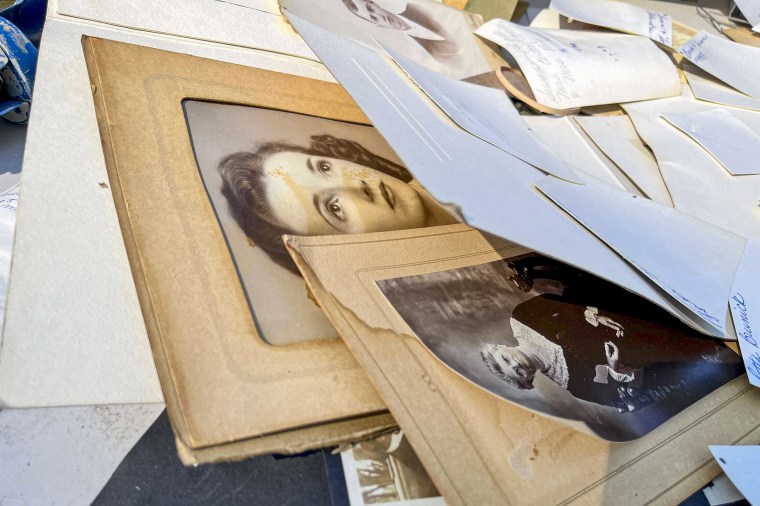 Family photographs rescued from the flooding from the Mendenhall River in Juneau, Alaska, on Aug. 6.Sean Maguire / Anchorage Daily News via AP
Family photographs rescued from the flooding from the Mendenhall River in Juneau, Alaska, on Aug. 6.Sean Maguire / Anchorage Daily News via AP“It’s very clear that these floods will persist for some amount of time, again, on a sort of decadal timescale into the future,” he said. “But there are so many different competing factors that work to either increase the volume of the flood or decrease the volume of the flood that we need to be able to quantify that it’s difficult to say how large floods will be in the future without much more detailed modeling of the glacier dynamics.”
At some point, Mendenhall Glacier will retreat and thin enough that it can no longer act as a dam, Hood said.
The flooding is a reminder of the global risk from bursting snow-and-ice dams — a phenomenon called a jökulhlaup, which is little known in the U.S. but could threaten about 15 million people around the world.
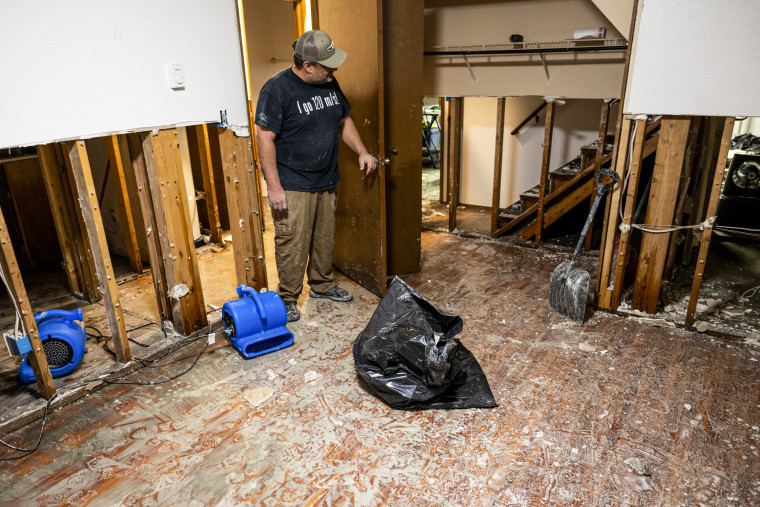 Citizens remove wet drywall and insulation on the ground level of a home following flooding from the Mendenhall River on Aug. 6 in Juneau, Alaska.Marc Lester / nchorage Daily News via AP
Citizens remove wet drywall and insulation on the ground level of a home following flooding from the Mendenhall River on Aug. 6 in Juneau, Alaska.Marc Lester / nchorage Daily News via APJuneau, a city of about 30,000 people in southeast Alaska, is reachable only by plane or boat. It’s the height of the tourist season, and the city is already struggling with a housing shortage that could limit temporary accommodations available for flood victims that might need them. Juneau also has limited rental car agencies for those whose vehicles were swamped.
The Mendenhall River crested at 15.99 feet (4.9 meters), a new record, topping the level during last year’s flood by about a foot, and the water reached farther into the Mendenhall Valley, officials said. The city said the water reached some homes outside expected flood areas. The valley is roughly a 15 to 20 minute drive from downtown Juneau.
Alyssa Fischer said that when she went to sleep Monday night, she didn’t think she had to worry about flooding where she lives. Her dad woke her up hours later via FaceTime and alerted her to rising water outside. She helped him move his cars to higher ground, as well as her quails, before evacuating with her 4- and 8-year-old children and pets to a shelter at a local school. She said she noticed the license plate on her truck was bent from the water current.

 10 months ago
10 months ago
 (200 x 200 px).png)
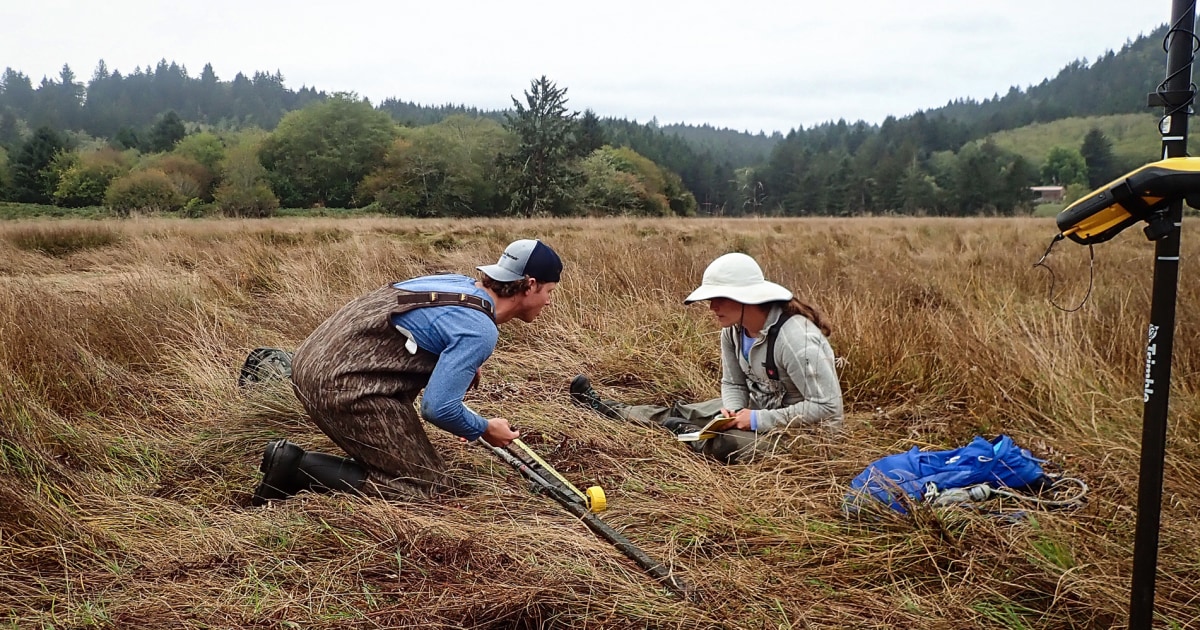

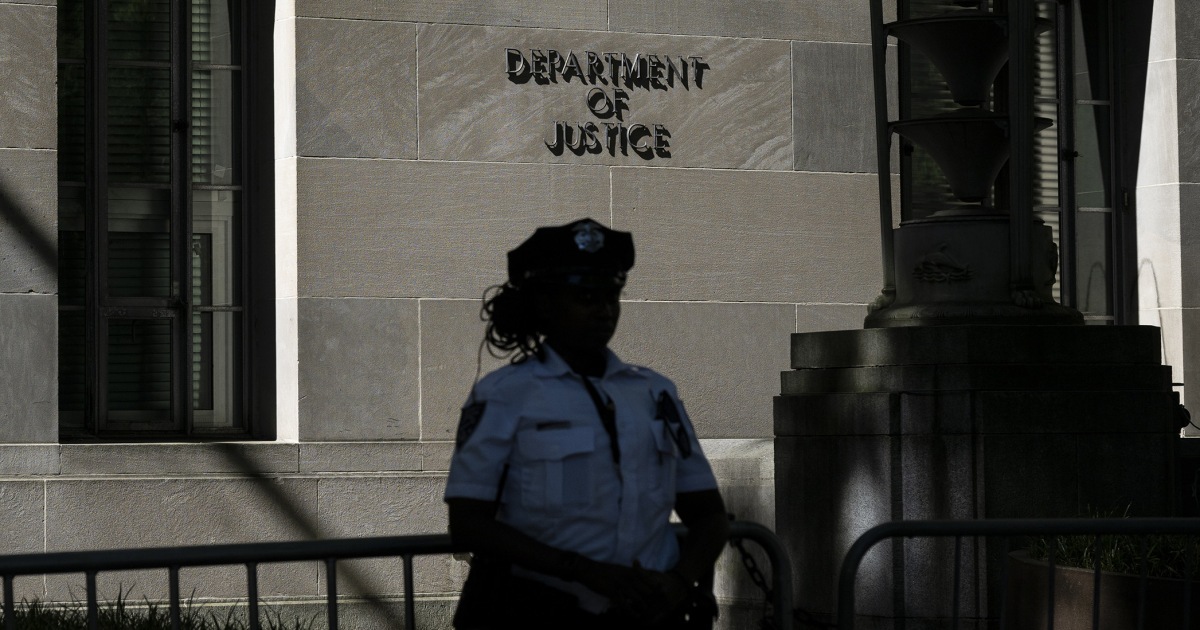
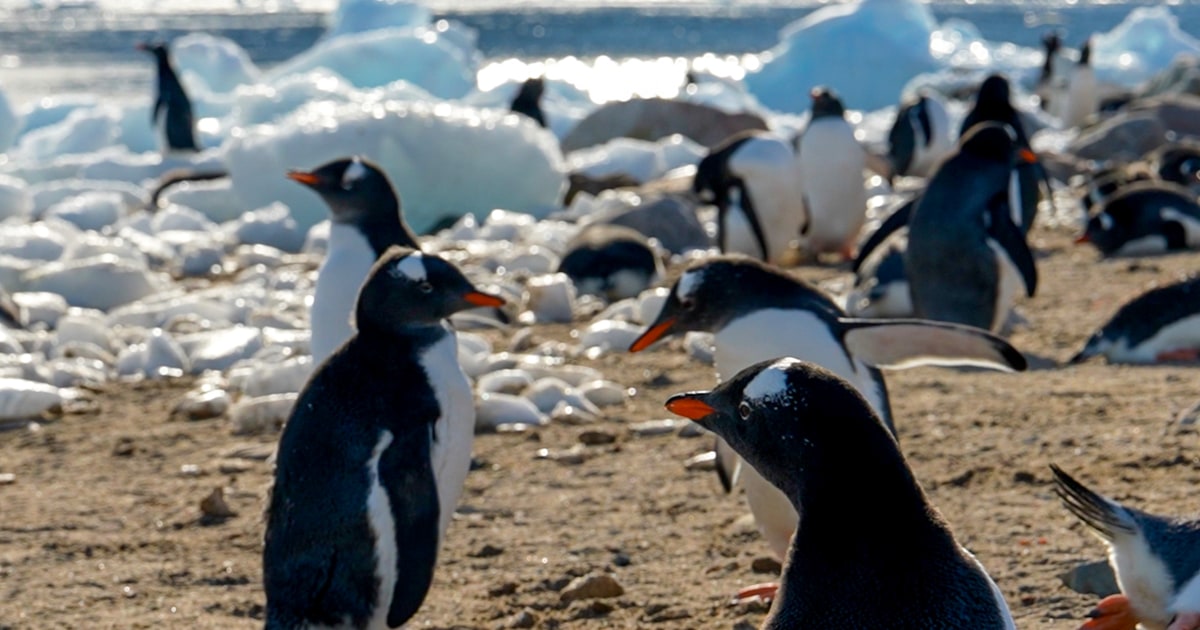




 English (US) ·
English (US) ·